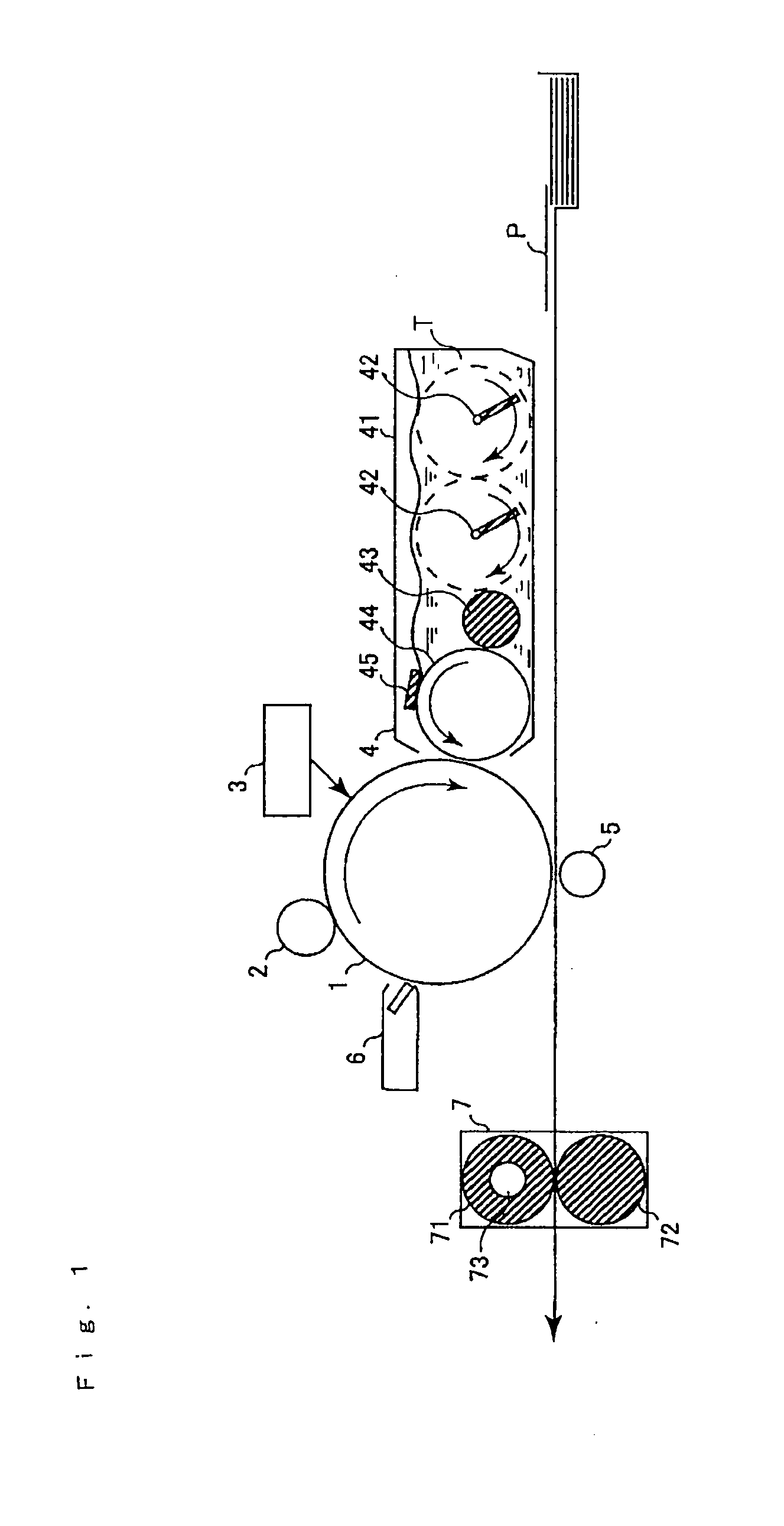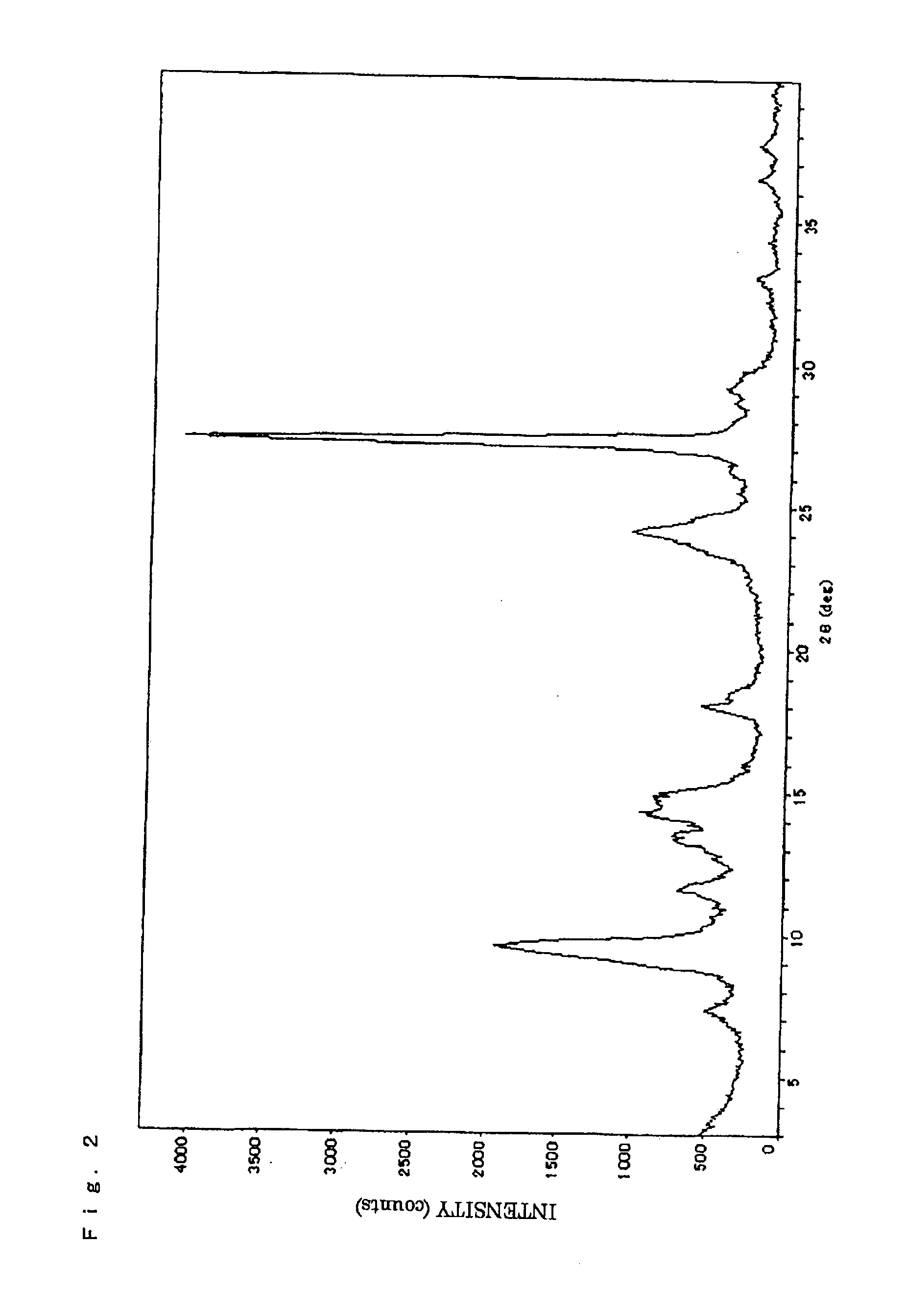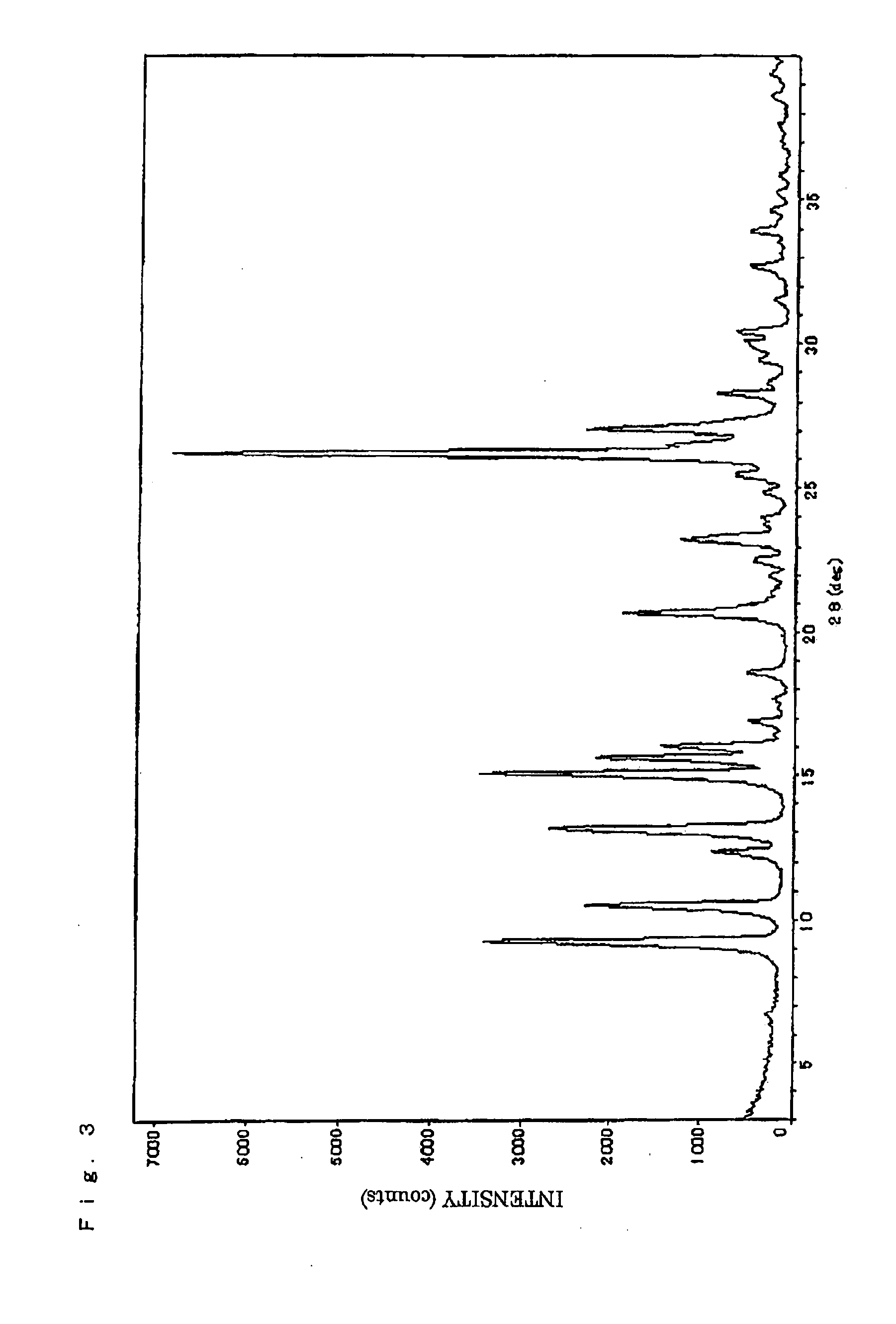Electrophotographic photoreceptor, image-forming apparatus, and electrophotographic cartridge
a photoreceptor and image-forming technology, applied in the direction of electrographic process apparatus, optics, instruments, etc., can solve the problems of high noise generation, persistent image defects, streaky image defects, etc., and achieve the effect of lessening the effect of invention, excessively low glass transition point (tg), and impaired electrical properties
- Summary
- Abstract
- Description
- Claims
- Application Information
AI Technical Summary
Benefits of technology
Problems solved by technology
Method used
Image
Examples
example 1
Production of Coating Fluids
[0187]A coating fluid for undercoat layer formation was produced in the following manner. Rutile titanium oxide having an average primary-particle diameter of 40 nm (“TTO55N”, manufactured by Ishihara Sangyo Kaisha, Ltd.) was mixed with methyldimethoxysilane (“TSL8117”, manufactured by Toshiba Silicone Co., Ltd.), the amount of which was 3% by weight based on the titanium oxide, by means of a Henschel mixer. The resultant surface-treated titanium oxide was dispersed in a mixed solvent composed of methanol and 1-propanol in a weight ratio of 7 / 3 by means of a ball mill to obtain a dispersion slurry of the surface-treated titanium oxide. The dispersion slurry was mixed with a methanol / 1-propanol / toluene mixed solvent and pellets of a copolyamide composed of ε-caprolactam [compound represented by the following formula (A)], bis(4-amino-3-methylcyclohexyl)methane [compound represented by the following formula (B)], hexamethylenediamine [compound represented b...
example 2
[0200]A photoreceptor was produced and evaluated in the same manners as in Example 1, except that a binder resin in which m:n was 80:20 and which had a weight-average molecular weight (Mw) of 50,000 and a number-average molecular weight (Mn) of 20,000 was used. The results obtained are shown in Table 1.
example 3
[0201]A photoreceptor was produced and evaluated in the same manners as in Example 1, except that the compound represented by (1)-11 shown above was used as a charge-transporting material in place of the compound represented by (1)-2 shown above. The results obtained are shown in Table 1.
PUM
| Property | Measurement | Unit |
|---|---|---|
| Tg | aaaaa | aaaaa |
| Tg | aaaaa | aaaaa |
| Tg | aaaaa | aaaaa |
Abstract
Description
Claims
Application Information
 Login to View More
Login to View More - R&D
- Intellectual Property
- Life Sciences
- Materials
- Tech Scout
- Unparalleled Data Quality
- Higher Quality Content
- 60% Fewer Hallucinations
Browse by: Latest US Patents, China's latest patents, Technical Efficacy Thesaurus, Application Domain, Technology Topic, Popular Technical Reports.
© 2025 PatSnap. All rights reserved.Legal|Privacy policy|Modern Slavery Act Transparency Statement|Sitemap|About US| Contact US: help@patsnap.com



